Is Charging for Clean Air the Next Thing on the Menu?


For in many communities in China, air quality problems are the norm, not the random exception. The hazy photos of residents donning masks to protect themselves from inhaling smog may seem like overkill to the average Los Angeles resident, but according to the U.S. Embassy in Beijing, where clean air is often at risk, it's no laughing matter. To underscore this danger, the embassy has devoted a page on its website to monitoring smog conditions in the city, complete with a multi-colored chart describing the medical risks associated with air pollution.
It's also prompted at least one restaurant in a city south of Beijing to install its own air filtration system -- and to come up with a novel way of covering the expense.
The restaurant, located in Zhangjiagang City, in the Jiangsu Province, began charging for "air cleaning" after it installed an air filtration system. The restaurant defended the charge after patrons complained about being charged an extra fee of one yuan, or 15 cents at the end of the meal.
Since then, the restaurant has been told by the local government that the fee is illegal, since inhaling is generally not an option and therefore can't be sold to the patron as a commodity. But some comments on Weibo (China's popular social media) have suggest that Chinese patrons aren't that put off by the charge.
"[There] is nothing wrong with charging this extra fee," wrote one commenter. "The kind of dining environment decides the kind of pricing.”
For those of us old enough to remember when drinking water was free (come on, it wasn't that long ago), and didn't come in flimsy clear bottles that could only be found squeezed between the beer and the soft drinks in the convenience section, charging for clean air has an eerie ring to it. So does rational discussion about whether patrons who pay for a classier meal should also pay for breathing higher-quality air.
The discussion also seems to belie a point that NASA recently made when it wrapped up a 9-year-long study of air pollution across the globe. It found that nitrogen dioxide emissions from congestion and power plants could be pin-pointed from space quite clearly. Those areas that had either reduced their carbon emissions or were not as developed industrially (war-torn Syria, oddly enough was used as an example) did not exhibit the same nitrogen dioxide emissions.
The takeaway says NASA, is that "[when] governments step in and say we're going to build something here or we're going to regulate this pollutant, you see the impact in the data."
The same can said about human nature: It's a great barometer for those things that governments need to protect.
Images: 1) Benjamin Vander Steen; 2) Nicolo Lazatti; 3) NASA Goddard Space Center
3p Staffers Share Their Sustainable Holiday Traditions!


We all have our yearly holiday traditions: a favorite dish, a treasured carol or that family gathering you wait for all year long. But do you stop to consider the environment amidst your holiday merriment?
Here at 3p, we strive to weave sustainability into everything we do. So, we asked our staffers to share a sustainable holiday tradition. From our family to yours, we hope these small ideas can give you a little inspiration this season.
Have a sustainable holiday tradition you'd like to share? Tell us about it on social media using the hashtag #3pholiday or share in the comments below.
Nick Aster: 3p founder and publisher
"Our family reuses ribbons year after year and generally uses the morning newspaper to wrap presents. It looks kinda cool, actually!"
Click here to read posts from Nick.
Jen Boynton: 3p editor-in-chief
"On New Year's Day, my late grandmother's birthday, my family always gets together for a fancy brunch. The photo above is from our New Year's Day gathering while visiting family in Hawaii last year. While we leisurely eat our way though plate after plate, we review the past year's highlights and challenges. It's a great opportunity to reflect on everything we've accomplished rather than focus solely on what's to come. There's always plenty of champagne to toast to a sweet new year."
Click here to read posts from Jen.
Jan Lee: 3p correspondent
"In lieu of gifts, we donate to charities in the name of a relative or friend. We usually pick a charity that reflects the specific interests or focus of the individual or family. So, one family will receive notice of a donation to an organization that helps improve parks and other amenities for local kids in their metro area, while another will receive a card from a wildlife organization that supports endangered species. It's a great hit at both Chanukah and Christmas."
Click here to read posts from Jan.
RP Siegel: 3p correspondent
"We fill a Ziploc with some food, warm clothes, a dollar or two, a Christmas card, and such and hand it out to homeless people we happen across."
Click here to read posts from RP.
Tom Schueneman: 3p correspondent
"Ever since I can remember, one of my favorite Christmas decorations was a simple Christmas tree lamp consisting of a cone-shaped piece of cardboard with sparkles on the outside and little slits up and down the cone. It rested on a pointed bracket over a standard, blue-coated lightbulb. As the lightbulb heated up, the rising warm air pushed through the slits on the cardboard tree, making it spin around.
"Not necessarily a high-tech or sustainable design, but I still put that old tree out every year. Admittedly a little tired looking now, it is the same lightbulb that came with it when my parents bought it in the mid-fifties, a couple years before I was born. The modest little tree powered by the heat of a light bulb has sustained the joy of Christmas in our family for decades."
Click here to read posts from Tom.
Tina Casey: 3p correspondent
"We have a live tree, which will get chipped for mulch after the holidays. The lights and ornaments are from various thrift shops, not for the sake of sustainability, just for the sake of having unusual (and inexpensive) ornaments."
Click here to read posts from Tina.
Mary Mazzoni: 3p senior editor
"My parents and I have purchased evergreen trees with root balls every holiday since my childhood. After making their appearance as the yearly Christmas tree, decorated with mostly heirloom ornaments, we planted the firs, pines and spruces in the front yard. Each of the evergreens seen above is a reminder of holidays past -- and our yard grows more beautiful by the year!"
Bill Roth: 3p correspondent
"Once the kids were in high school, my family stopped giving each other Christmas presents.
"Instead we gave the money we would have spent on presents to charities that helped others. No gift wrapping to throw away, no fighting for parking spaces at the mall, no gift returns … a reduced environmental footprint plus the satisfaction that we fulfilled the Christmas spirit by helping those in need."
Click here to read posts from Bill.
Lesley Lammers: 3p correspondent
"I bought a small pine tree that is a house plant, and I'm using it as my Christmas tree this year ... I also buy used holiday tins at Goodwill, cook lots of treats and reuse the tins to send the goodies to friends as presents."
Click here to read posts from Lesley.
Marissa Rosen: 3p social media director
"Something I've done in the past is forgo giving material gifts, and instead give each family on my shopping list a group donation to the Natural Resources Defense Council (NRDC). That way, they get a card that says "you saved an elephant, thanks to Marissa's holiday donation for you" or something like that, instead of a useless purchase of an item that they don't need!"
Click here to read posts from Marissa.
Renee Farris: 3p correspondent
"My tradition is to read Nick Kristof's Holiday Gift Giving Guide and give gifts with meaning alongside regular presents. My large family draws names for Christmas gifts, so I only give a handful of people presents. This year I gave my nieces and nephew Legos, books, games and the gift of education to a girl for a year. One sister-in-law I gave mixing bowls, a dish drying rack, and (for a mere $25) eyesight to a blind person. I gave another sister-in-law a clothing gift card and helped disadvantaged minority school kids since she's a school teacher.
"For a ladies' Secret Santa gift exchange, I bought a solar lamp for a refugee ... then decided to give candy instead, since I didn't know how a donation in honor of the person would be received. Wish I would have stuck with the lantern. Most of the nonprofits I donate to for Christmas have cards that can be printed, mailed, or emailed to let my gift recipient know that I donated in their honor. When relatives ask me what I would like for Christmas, I always include donations to my favorite nonprofits.
"I also like to give gifts in reusable Christmas cloth gift bags. The reusable bags have seen many many Christmases in my family! They recirculate every year."
Click here to read posts from Renee.
All images courtesy of the TriplePundit team.
Michigan’s 'Double Up Bucks' Program Maximizes SNAP Benefits at Farmers Markets


Last spring, I visited my brother, Mark Cowell, owner of Blue Stone Farm in Otsego, Michigan. He was busy harvesting kale, onions and asparagus for the first farmers market of the season. His vegetables are pesticide-free and his chickens are free range.
All of his annual CSA shares were spoken for, and my son was excited about stocking up on dandelion jelly since we were out and he will not eat store-bought jam. My kids are also fans of the Concord grape jelly, the zucchini bread and the fresh green beans, although they don’t really understand all that goes into growing and harvesting fresh food. But, I know we are lucky to have access to healthy, locally-grown produce.
Often people feel that farmers market produce is more expensive and outside their food budget, but some organizations, like Fair Food Network and the Michigan Farmers Market Association, are working hard to make locally-grown produce more accessible to low-income families.
In 2009, Fair Food Network launched an innovative program called Double Up Food Bucks that allows SNAP (Supplemental Nutrition Assistance Program) benefit recipients to redeem them at farmers markets to double their money up to $20 (for a total of $40) per market, per day so they can take home more locally grown fresh fruits and vegetables. This expands their food budget for healthy food, increases the number of customers at farmers markets, increases farmers’ income and keeps more dollars in the local economy. The USDA estimates that “every $1 in new SNAP benefits spent can result in up to $1.80 in total economic activity.”
“One of the biggest benefits of the program is that by spending locally, instead of at Walmart, that money stays within the community,“ Mark said.
Until 2015, Double Up Food Bucks was funded entirely by private donors. Double Up’s strong track record in Michigan informed and inspired bi-partisan support for a new $100 million healthy food incentive grants program established in the 2014 Farm Bill. In March, Fair Food Network received a $5.1 million award, the largest award to a nonprofit in the first round of funding to further expand the program in Michigan.
I talked to the Texas Township Farmers Market Manager (in Kalamazoo, Michigan), Emily Beutel. She has seen the program gain popularity by leaps and bounds each year.
In 2009, five farmers markets in Detroit participated in Double Up, and now over 150 sites across the state do, including 20 grocery stores in one of the first pilots in the nation, an important next frontier in healthy food incentives to reach more low-income families and expand the program benefits to mid-size farmers who can serve these larger markets.
The program has impacted more than 300,000 low-income families and 1,000 farmers each year The number of customers at the Texas Township market, and the use of SNAP funds, has grown, and more than that, Beutel and Mark have seen how enthusiastic and loyal many customers have become.
Beutel has watched customers develop close, long-term relationships with individual farmers, and learn about different types of fruits and vegetables and how to prepare them. Even after some customers got to a place where they no longer needed SNAP benefits, they continued to come to the market and buy from their preferred farmers.
“Local food is not a luxury item,” Beutel says. “Everyone should have access to it. It’s about everyone having a basic right to eat healthy, local food. We are really proud to be a part of that.”
The summer, as usual, was a busy one for Mark, harvesting and preparing his goods for CSA customers and markets in southwest Michigan. Business was good.
As the West Michigan farmers market season was winding down, I asked how the Double Up Bucks program was going. He said that he, Emily and some of the other farmers didn’t see the bigger SNAP numbers they thought they might see this summer. However, he said, this fall they felt like the numbers went back up.
I contacted Fair Food Network to see if they had any current numbers on how the program was doing and spoke to Emilie Engelhard, Communications Director.
Engelhard told me that each year, demand for Double Up has grown and the value of SNAP benefits spent with farmers has increased, including this year. Fair Food Network is now working with local partners in dozens of other states to bring this proven model to their communities. While Michigan isn’t widely known for pioneering sustainability efforts, it is far and away the leader in the Midwest states for SNAP use at farmers markets and number three in the nation, even though eight states distributed more SNAP benefits.
Engelhard shared some USDA data on SNAP use at farmers markets. According to Alan Shannon, Public Affairs Director of USDA-FNS/Midwest, SNAP redemptions in the six Midwest Region states (IL, IN, MI, MN, OH, and WI) grew from $2.3 million in 2012 to $2.8 million in 2014, with Michigan leading the way.
The USDA also reported that overall, farmers markets (FMs) nationwide are working hard to reach more people in their communities and provide fresh local food for a wider customer base. According to a 2014 Farmers Market Managers Survey (45% of farmers markets in USDA directory), 64% of FM managers reported increased numbers of customers and 63% reported higher sales. “A majority of FMs (52%) are involved in increasing access to fresh foods through supplemental coupons, CSAs, and direct marketing to restaurants and food service providers. The states with most FMs are: California, New York, Michigan, Ohio, and Illinois. Taken together, FM economic viability is improving and increasing healthy food access to vulnerable populations.”
In addition, Engelhard says, “the $5.1 million grant from the USDA’s Food Insecurity Nutrition Incentive (FINI) grants program awarded in March 2015 (plus matching funds) will allow us to expand the program in Michigan to more farmers markets and up to 50 grocery and small food stores, and help markets adopt mobile technology and be open year-round.”
She also did a bit of research on the numbers at the Texas Township Farmers Market, and although the final numbers are still being tallied for the season, she says that they are consistently strong.
“Double Up and SNAP distributed to customers are nearly identical at Texas Township farmers market this year compared to the same time period last year (June – August). The only noticeable difference is that the market is reporting less Double Up and SNAP transactions and less new customers compared to the same time period last year. This could indicate that there are more returning customers coming to the market and maximizing the match compared to last year.”
Engelhard suggested that a vendor (like Mark) might feel like they are seeing less Double Up transactions because there are fewer new faces compared to last year even though the dollars in the marketplace are very comparable. Also, she says, some experienced Double Up users could also be holding onto their tokens to redeem in peak season, which could explain that bump Mark noticed this fall.
One positive reason that the numbers may have dipped is that fewer people are receiving SNAP benefits each year as we move away from the recession. The USDA reported that the “average monthly SNAP participation in 2014 was 46.5 million, down from 47.6 million in 2013..” So this seemingly slower sales period during the summer might also underline the transition that Mark and Beutel talked about, namely that when customers no longer need SNAP benefits, they continue to shop at the farmers market with their own funds, which would keep sales numbers steady while Double Up transactions seemed more infrequent.
Of course, the Texas Township Farmers Market is just one small market in Michigan, but overall, the news for rural markets in Michigan is also very good. According to a Fair Food Network report:
“In 2014, more than one-third of the farmers’ markets that participated in the program were in communities of fewer than 50,000 people, and 50 of these markets were in rural communities with populations of less than 20,000. Almost 20 percent of the SNAP and Double Up dollars were spent in these markets last year, and 34 new rural markets and farmstands joined the program in 2015. Rural residents also used Double Up incentives at higher rates than urban shoppers, which may dispel myths that farmers’ markets are an affluent urban phenomenon.”
Blue Stone Farm doesn't have any more farmers markets this year, but we still get jars of jelly whenever we can. We’ll keep buying it as long as they can make it, and then we’ll live off of our frozen green beans and wait for next spring.
It will be interesting to see what other changes the Double Up Bucks program brings to farmers markets in Michigan and other states in the future.
images courtesy of Blue Stone Farm
Was COP21 The Final Nail in Coal’s Coffin?
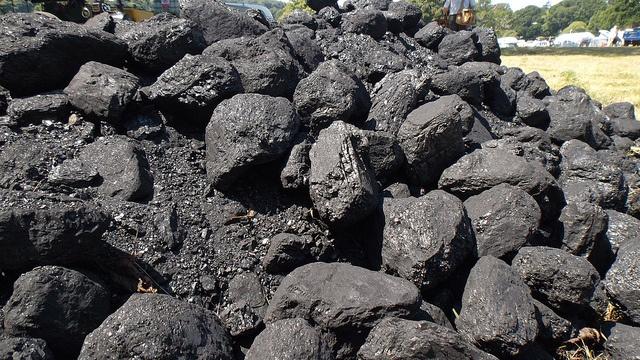

Whether the climate agreement signed at the COP21 talks in Paris becomes reality or becomes stifled in national capitals worldwide, the fact remains that conference has increased awareness about the risks that stem for climate change. The shift towards cleaner sources of energy, however, have already been underway. Even before COP21, more global corporations, along with national and regional governments, have been making new commitments to use renewables and decrease greenhouse gas emissions. Here in the U.S., natural gas has become the fuel of choice for new power plants connected to the grid. China, the world’s largest coal producer and consumer, appears to be burning less coal—although some experts suggest the country is under-reporting its coal consumption.
Whether the Chinese government is fudging the data or not, however, coal is slowly on its way out—not as fast as some advocates would like, but the evidence suggests this trend is indeed occurring. At least, such an outlook is according to Cleveland-based Institute for Energy Economics and Financial Analysis (IEEFA), which suggests that China already reached peak coal in 2014.
According to the IEEFA’s latest report, in addition to other commentary, the coal industry is in “deep structural decline.” Despite the fear that accelerated demand for energy in China and India would have a debilitating effect on the world’s climate, IEEFA’s analysts insist that the world’s largest economies have already moved past peak coal. According to their data, China’s coal production has peaked in 2013 and imports have continued to decrease; India’s demand for thermal coal imports likely peaked earlier this year; and Japan’s energy struggle post-Fukushima notwithstanding, that nation’s thermal coal imports probably peaked last year as well.
In a press release issued last week, IEEFA bluntly described the global coal industry as one in demise: “declining demand, excess supply, under-utilized coal-related rail and port infrastructure, relentless cost down initiatives, excessive financial leverage, asset write-downs and unprecedented stranded assets shareholder wealth destruction.” Post-COP21, investors in the global coal industry have responded in kind—the larger coal companies have witnessed a huge hit to their stock prices and overall financial performances, anywhere from 10 to almost 40 percent.
Granted, this outlook is coming from an organization that has been quick to stand up to the American coal industry in recent years. IEEFA has opposed bailout plans for coal-fired plants in Ohio and West Virginia; has led the charge to close what it describes as aging and obsolete coal fired plants across the country; and has documented what it alleges are spikes in electricity prices in regions where new coal burning plants were launched.
For those advocates who insist that the increased deployment of clean energy projects is the best path to limiting climate change this century, the IEEFA’s gives them more ammunition--not to mention an early Christmas gift in the form of continued momentum post-Paris. Meanwhile, the increased adoption of clean energy worldwide, despite the current low costs of fossil fuels worldwide, suggests that coal is in for an even rougher year in 2016.
Image credit: Flickr (Oatsy40)
Landscape Restoration: It's Time
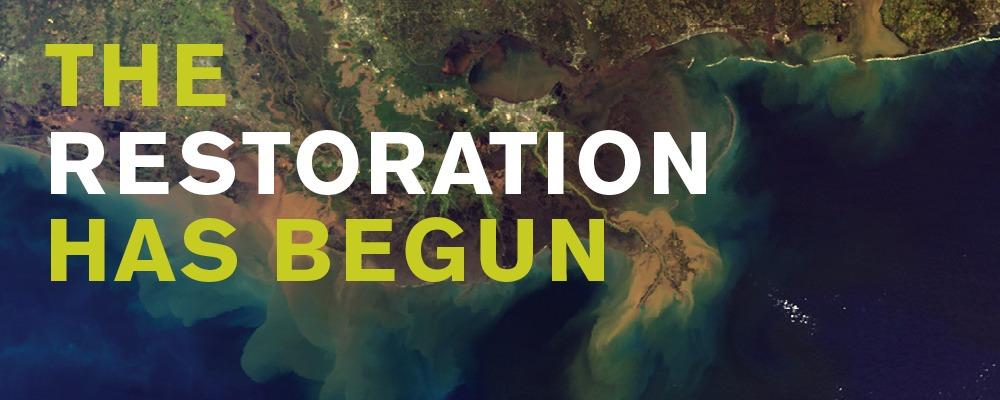

By P.J. Marshall
The Restoration has begun. It’s official.
From the very first speeches on the first day of COP21, landscape-scale restoration was on the global agenda as never before.
Prince Charles was among the first to address the assembled delegates, and was also the first to touch on landscape-scale restoration, elevating it alongside its more commonly discussed cousin, preventing deforestation.
"Given that we have managed to reduce the world's tropical forests so significantly over recent decades (with over 500 million hectares lost since 1950), the restoration of forest landscapes should not be an afterthought - but an equal priority to halting deforestation and degradation," he said.
Then, at the Global Landscapes Forum on Dec. 5 and 6, where more than 3,000 representatives of business and civil society, double the expected attendance, converged to discuss the role landscapes can play in “solutions to the planet’s greatest climate and development challenges,” landscape-scale restoration was the buzz phrase. Described by some as the largest side event at the conference, where there was standing room only, the event saw the CEOs of multinationals including Veolia and Danone discuss their perspective on investing in landscape scale restoration to tackle climate change, global poverty and environmental degradation simultaneously.
At Restore the Earth, we hosted a breakfast on Wednesday Dec. 9, where thought leaders including Hunter Lovins, BSR’s Eric Olson and USBCSD’s Andrew Mangan joined us for a robust discussion on the opportunity for the private sector in leading on restoration.
And finally, there it is, right there in Article 5.1 of the historic global agreement inked in Paris on Saturday night. It reads:
“Parties should take action to conserve and enhance, as appropriate, sinks and reservoirs of greenhouse gases as referred to in Article 4, paragraph 1(d), of the Convention, including forests.”
It’s that “enhance” that is so important to us at Restore the Earth. It signals a new appreciation of the role that landscape restoration can – indeed must – play in our urgent quest to keep the world to within 2 degrees, now 1.5 degrees Celsius, warming.
Of course, shifting our energy economy towards low carbon sources is a huge part of the work that lies ahead. We have to stop putting more carbon into the atmosphere as a matter of the utmost urgency.
But there’s another side that is equally important – and urgent. We also need to rapidly implement strategies to mitigate and sequester the carbon that we’ve already emitted. The path to get there is through landscape-scale restoration – restoring our degraded ecosystems - which can contribute 0.5 degree C of the solution by the end of the century.
At COP21, there was much focus on the challenge that so many of the solutions to hold us to the 1.5 degrees C goal feel hypothetical and untested. Landscape-scale restoration is different. We’ve proven landscape restoration works, on the ground. At Restore the Earth. We’ve already restored 45,000 acres along North America’s Gulf Coast. To get there, we’ve raised more than $29million in funding and collaborated with public and private partners including U.S. Fish & Wildlife, USDA/Natural Resource Conservation Service, Shell, CITGO, Entergy, Wells Fargo and Timberland. We’ve deployed 26,000 volunteers. Today, these reforested areas have restored habitat, created jobs, and brought back the rich green landscape that contributes so much to the Gulf Coast communities and culture. And we’ve been able to prove that this work yields incredible value, creating $9 of value for every $1 invested. So for an estimated cost of purchasing, restoring and permanently conserving degraded land of $5,000 per acre, we can create $45,000 of value.
This is just the start. The need now is to rapidly scale up this work to a more epic level. At REF, our next grand project is to restore North America’s Amazon, 1 million acres of degraded land in the Mississippi Alluvial Valley. If we succeed in this project, it will reduce America’s carbon footprint by fully 2 percent. It will also generate billions in social, environmental and economic value.
The U.N. Convention to Combat Desertification (UNCCD) estimates that we have the potential to restore 2 billion hectares of land globally—an area larger than South America. That’s a huge investment opportunity for leaders with the vision to take it on.
As the old Chinese proverb says, "The best time to plant a tree was 20 years ago. The second best time is now."
So let’s get to work. Join the restoration. It has begun.
Restore the Earth, a registered not-for-profit, works with public- and private-sector partners to restore the Earth’s essential forest and wetland ecosystems. Since Hurricane Katrina in 2008, the organization has secured more than $29 million in public and private funding to reforest more than 45,000 acres along the Gulf Coast. Restore the Earth was also the first to deploy restoration on oil-soiled wetlands after the Deepwater Horizon spill. Currently, Restore the Earth is working to restore 1 million acres of degraded land in the Mississippi River Basin—North America’s Amazon.
Elon Musk, Experts: A Zero-Emissions Vehicle Should Be VW's 'Punishment'

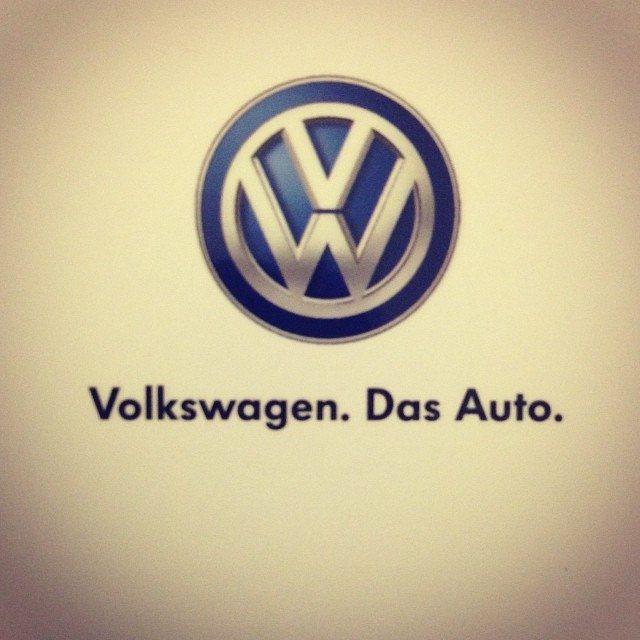
Elon Musk and a few dozen of his tech cohorts think they know how to solve the crisis posed by the Volkswagen emissions scandal: Make the automaker come up with a truly zero-emissions model.
Don’t penalize Volkswagen with hefty fines and recalls that may not be pursued by consumers, the group argues, but compel the company apply the technology and expertise it's gained over the past decade to come up with a car that can revolutionize the auto industry.
Last week the consortium of tech leaders, which included heads of companies like SolarCity, Ceres and the Sierra Club, called on the California Air Resources Board (CARB) to adopt an innovative approach to VW's admitted use of software that could undermine emission inspections.
"The VW emissions scandal is mainly the result of physics meeting fiction," says the consortium, which points out that even if Volkswagen is required to recall the affected vehicles, "[drivers] won’t come in for a fix that compromises performance." What is needed isn't more lost revenue, but more productive data (and maybe even a wholly emissions-free car) that steers the planet toward lowering greenhouse gases.
"'[Cure] the air, not the cars,'" they continue, "and reap multiples of what damage has been caused while strongly advancing California’s interests in transitioning to zero emission vehicles."
To do this, the group offered a five-step plan:
- Release VW of its requirement to fix those vehicles already on the road in California. That number is relatively insignificant to the actual vehicle emission levels in the state.
- Require VW to "accelerate greatly its rollout of zero emission vehicles." The authors suggest that they "present zero opportunities for cheating," and therefore won't cost the state added overhead to enforce.
- Set aggressive expectations for that roll-out, with a 10 to one reduction in emissions over a five-year period. Use VW's previous "diesel cheating" vehicles as the comparison bar for those new standards.
- Make the company invest in new factories and research facilities, a goal that VW has stated it is already working to accomplish. Only, require the company to invest those dollars in facilities in California, where it will create more jobs. The money that would be spent on penalties, the group argues, can be better spent developing California-based technology.
- Allow the company to have a say in the timing by allowing zero emission credits to be applied to the endeavor.
The group points out that the idea isn't exactly new: In the 1990s, the Justice Department and the Environmental Protection Agency went after diesel truck manufacturers' deceptive behaviors by requiring the companies to conform to new, accelerated standards. Requiring VW to use its technology to develop a truly zero-emissions vehicle is ultimately a win-win for California as well as consumers.
This isn't the first time that Musk has spoken up on the VW scandal. In September, he challenged agencies to implement random emissions testing, with the observation that the world has "reached the limit of what’s possible with diesel and gasoline." What is needed now is a new form of technology that can move past these challenges.
CARB has not yet offered a response to the proposal. The agency is due to issue a ruling on VW's proposed plan to recall vehicles containing the deceptive software by Jan. 14. With the current increasing demand for more resourceful answers to California's environmental challenges, it will be interesting to see what steps California's leading environmental agency opts to take for the new year.
Image: Flickr/Blowing Puffer Fish
REI Brings Ecotourism Alive in Peru
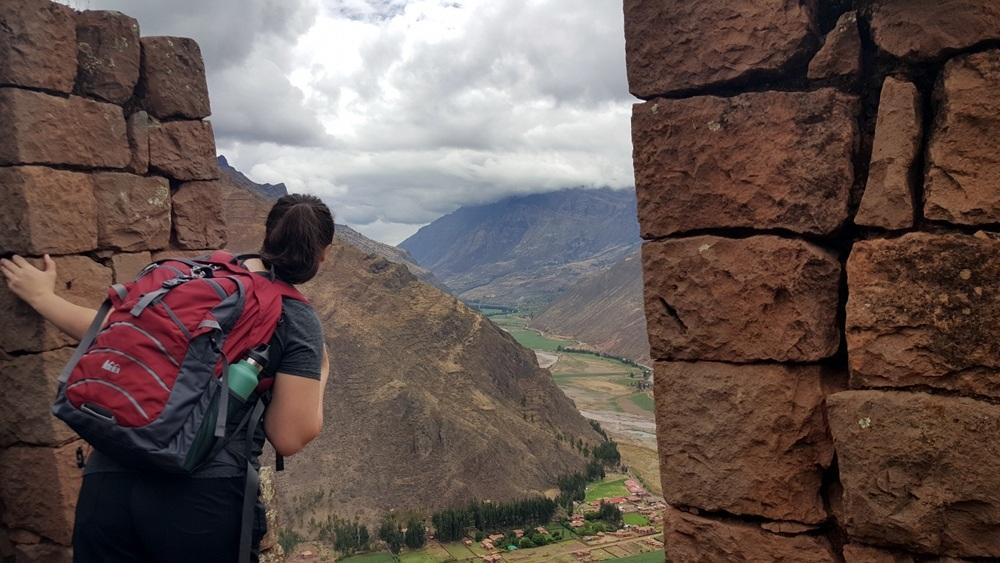

As regular 3p readers may remember, I recently returned from an ecotourism adventure in Peru's Sacred Valley. For those unfamiliar with the area, the Sacred Valley is a region in Peru's Andean highlands that served as a key settlement for Incan and pre-Incan societies. The fertile farming region includes the famed city of Machu Picchu, smaller villages like Pisac, Chinchero and Ollantaytambo, and the ancient city of Cusco, which served as the capital of the Incan empire.
The region still serves as a vital agricultural hub, supplying a host of vegetables and grains to Cusco, which has experienced unprecedented growth in recent years. In the 1970s, the ancient city's population hovered around 60,000 people. Today, it's home to more than 500,000 -- thanks, in large part, to a boom in the tourism sector, said Ernesto Ore, a Cusco resident and lead guide for Sacred Valley tours with REI Adventures -- the adventure travel company that hosted me on my trip.
It's no wonder Peru attracts so much attention from tourists. Apart from the awe-inspiring Incan and pre-Incan ruins of the Sacred Valley, the South American country is home to unparalleled natural beauty and a vast diversity in climates and landscapes. Of the 104 types of weather and climate patterns found on Earth, 48 can be found in Peru, said Del Miro Portillo, also a Cusco resident, who serves as a lead guide for REI Adventures' lodge-to-lodge treks on Peru's Mount Salkantay.
It's basically impossible not to be humbled by the natural beauty of Peru (just look at that photo!). But, as tourism continues to rise in the region, this brings to mind a vital question: How can we ensure tourists tread lightly -- leaving no negative footprint on the region or, ideally, making a positive impact on the communities they visit?
REI Adventures is one tour company that does this right. With a hearty emphasis on outdoor experiences, REI Adventures brings travelers face-to-face with some of Peru's most stunning landscapes. Along the way, the company's Peru itineraries invite adventurers to visit local businesses and learn more about customs and culture directly from those who know it best: the locals.
This case study in ecotourism and positive travel is the perfect example of how travelers can visit some of the world's most beautiful places, while doing their part to keep them that way. Read on to learn more about how ecotourism can make a difference.
Learning from locals while boosting economies
REI Adventures' Peru itineraries are designed specifically to emphasize nature, while teaching travelers more about Peru's culture through visits to small villages and local businesses: As adventurers traverse rural hiking trails in cities like Cusco, Pisac, Urubamba, they're invited to shop local markets, learn about local weaving traditions or horse wrangling, and sample plenty of regional cuisine.
This is a win-win-win for travelers, locals and REI Adventures as a company: Travelers ditch cookie-cutter tourism in favor of an authentic experience; locals get to share their culture -- something Peruvians love to do -- while earning extra income; and REI Adventures has the opportunity to nurture the next generation of ecotourism guides and partners. “We believe in supporting local communities, local economies,” Cynthia Dunbar, general manager of REI Adventures, told TriplePundit. “We want to see our colleagues in the outdoor industry really thrive as well and be great partners for REI.” And this isn't just lip service. Attention to local economies is clearly visible in all of the company's Peruvian adventure itineraries.
On the second day of our visit to the Sacred Valley, our tour group hiked through Pisac -- stopping to learn about the ancient ruins from our two local guides. At the end of the three-hour hike, we were invited to shop for local handmade wares at the famed Pisac market, where venders from the village sell everything from woven blankets to handmade wood carvings as a way to support their families.
The following day, we visited Chinchero -- where we hiked through terraced salt mines and learned more about local weaving: a tradition that has been passed down for generations and is a revered pastime of women in the Sacred Valley.
The women, known simply as "the Chinchero weavers," lined up to greet us and explained local traditions like creating natural dyes from indigenous plants, spinning llama and alpaca fibers into yarn, and weaving them to create colorful textiles. Most adventurers left with not only an appreciation for this ancient tradition, but also plenty of handmade items like sweaters, blankets and bags -- providing income that's essential for these women to continue their work.
Another example of leveraging tourism dollars to create positive impact on local economies is the work of Mountain Lodges of Peru, which partners with REI Adventures for the company's lodge-to-lodge treks through the Peruvian Andes. Mountain Lodges created a nonprofit arm, Yanapana Peru, at its inception, in order to make sure the influx of tourism left a positive mark on mountain villages.
Before setting out on their treks, lodge-to-lodge adventurers first visit the Mollepata district of Cusco -- where Yanapana has worked for years to empower local women through traditional artistry. Unlike in Chinchero, women in Mollepata mostly practice weaving as a hobby, not an income-generator, and spend most of their time in the home. After working with locals for nearly a decade, Yanapana created and nurtured communities of women working in local traditions like textile-weaving and jam-making. The groups now reach 60 local women, who are given the opportunity to do something they love outside of the home, while creating a better future for their families.
As Gilda, a member of the Mollepata textile community, put it: "Thanks to this project, we can earn income for our families, and our children can also be helped -- not just stay here, but move on to Cusco and bigger places. We have to give thanks to Mountain Lodges, because our life is not the same as before. It is different."
Marco Antonio Chacon Delgado, mayor of the Mollepata district, also praised the project as a vehicle for sustainable tourism that "builds the village up, rather than destroying it."
Leveraging tourism for good
Getting business from a respected tour company like REI Adventures, which hosts dozens of trips to the Sacred Valley each year, is bound to be a boon for local economies. But the company takes things further.
It partners exclusively with in-country operators and local guides, patronizes locally-owned hotels and restaurants, and works with nonprofit groups to truly make a difference on the ground. Its latest project is a greenhouse in Mollepata, in partnership with Yanapana, through which it hopes to inspire reforestation using indigenous trees (more on this later in the series).
Of course, you don't have to travel with REI Adventures to make sure your trips have a positive impact. But if you're looking for an authentic travel experience that bolsters local communities, take the extra time to search out responsible travel companies that care about the communities in which they operate. Trust me, you'll be glad you did.
Image credits: Mary Mazzoni
Ed Note: Accommodations, travel and guidance in Peru were courtesy of REI Adventures. Neither the author nor TriplePundit was required to write about the experience. Opinions are our own.
The Psychological Triumph of the Paris Talks

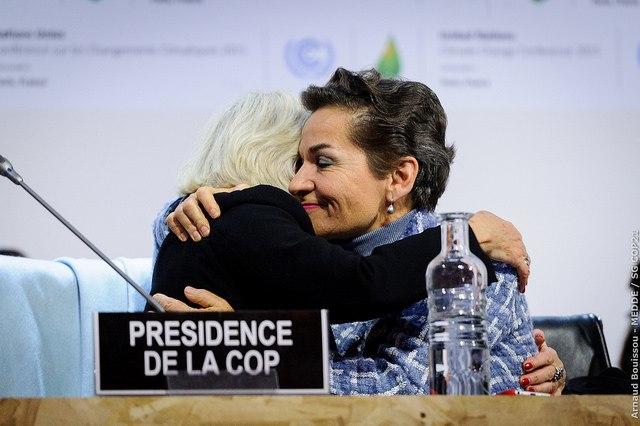
By Susan Clayton
We typically think of climate change as an environmental problem. But it can be just as accurately, and usefully, considered to be a social problem. Not only are the consequences important to society, but the causes, also, are embedded in human behavior, economic systems and social infrastructure. Perhaps more importantly, the reasons we haven’t done more to address climate change are entirely due to human factors: perceptual biases, emotional resistance and political barriers.
This is why I’m optimistic about the agreement that was reached in Paris. True, it’s not enough. The commitment for rich nations to provide financial aid to help developing nations is vague, and the enforcement mechanism is weak.
And yet, with the Paris agreement, the participating countries agreed to participate in this struggle to address climate change. Yes, some people are not on board, but most countries were represented, especially the ones that matter most by virtue of political influence, financial leverage and carbon emissions. That demonstrates two important human accomplishments: consensus that there is a problem and cooperation to accomplish a shared goal.
Consensus
Consensus is important. A widely recognized phenomenon in social psychology, “pluralistic ignorance,” refers to a situation in which everyone thinks that everyone else knows what is happening, but no one really does. When we confront a situation that seems like a crisis, we look to other people for guidance about what is going on and how we should respond. But because we’re all looking at each other, none of us is taking action.
In a series of experiments, researchers have shown that the presence of others can prevent people from helping when faced with an emergency. This is in part because everyone thinks that someone else will act if action is actually required, and if no one takes action then it must mean that no action is needed.
With regard to climate change, we all hear the message that it is an emergency, but we look around and see very few people doing anything. Most are going about their lives as if there were no problem. We look to see what governments are doing, and although some policies have been enacted, they are mostly contested by political opponents. Particularly in the U.S., people think there’s much more disagreement among scientists than there is, and their social groups may deny the existence of climate change. The average person can hardly be blamed for concluding that there’s no real problem.
After Paris, this is much more difficult. Over 180 countries came together to address the problem. Individual ignorance is still possible, but pluralistic ignorance is – how should we say? – passé.
Cooperation
Cooperation is also crucial. People ignore climate change in part because they feel helpless. If you feel that nothing you do will make any difference, why waste the effort? This is particularly true when we think that others will continue to exploit environmental resources, so that our own sacrifices will only serve to enable their unsustainable lifestyles. A major sticking point for climate agreements in the past has been the question of which countries would participate: Would it be only the rich countries? The countries contributing the most to the problem? Many were unwilling to act when others were exempted.
The agreement in Paris, significantly, asked for the efforts of every country. Not only that, but it makes those efforts transparent. The reporting process contained in the agreement requires regular updates and outside review of what each country has accomplished. When we think that everyone else has agreed to protect a common resource, and we trust them to follow through on that agreement, our individual actions seem more meaningful. We have more confidence that those actions will form part of a greater collective effort – one that might be large enough to be effective.
From the physical science perspective, the agreement reached in Paris leaves much to be desired. But from a social science perspective, it was momentous.
To me, as a conservation psychologist, it underscored the critical role for psychological science in addressing the issue of climate change as well as many of society’s other pressing challenges, from health and wellness to environmental conservation. Carbon emissions may not yet have changed course, but perceptions of the problem are heading in a more sustainable direction.
Image credit: COP21 Paris
Susan Clayton is president of the Society for the Psychological Study of Social Issues and a professor of psychology at the College of Wooster. She is also a featured psychologist in the American Psychological Association’s, “Psychology: Science in Action” campaign, aimed at showcasing the variety of settings in which psychologists work.
UPS to Use Landfill Gas to Power Its Memphis and Jackson Fleets
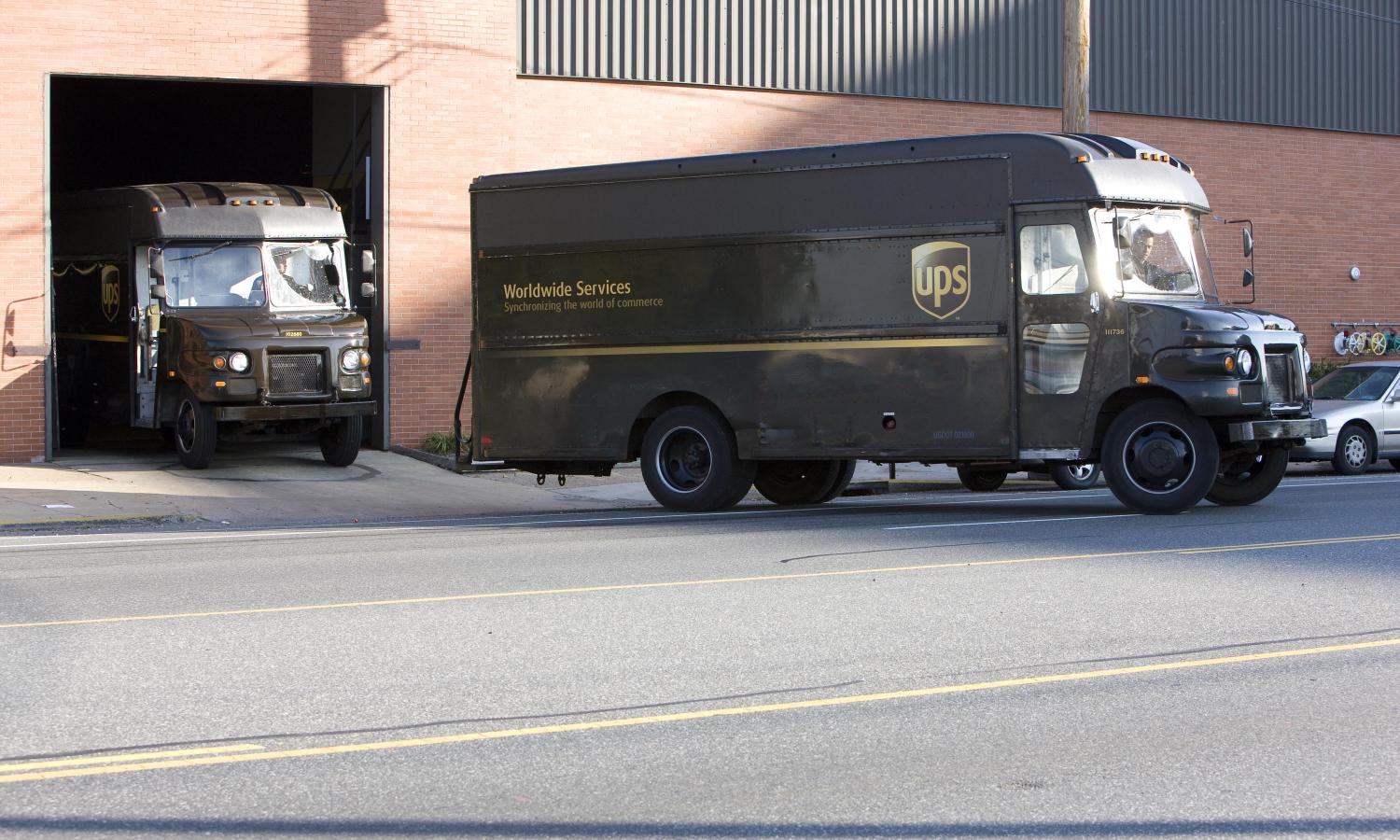

It’s the holiday season, so you can’t miss the brown trucks driving around delivering packages to people who have ordered gifts online. Next time you see a UPS truck, know that the company is working on expanding its use of renewable natural gas (RNG) in its fleet. The company’s goal is to drive 1 billion miles with its alternative fuels fleet by the end of 2017.
UPS has logged a total of 505 million miles with alternative fuel fleets so far, putting it halfway to its goal. While it took 13 years for UPS to travel the first 350 million miles with alternative fuels, by the end of 2017, it expects to drive over 350 million miles a year in these vehicles. It attributes the accelerated pace to ongoing investments in a fleet of alternative-fuel vehicles.
To help achieve its goal, UPS recently announced it will supply its Memphis, Tennessee, and Jackson, Mississippi, fleets with an estimated 15 million diesel-gallon equivalents of renewable natural gas from landfills. The move to use RNG in the two cities is part of the company’s multi-year agreement with Memphis Light, Gas and Water and Atmos Energy Marketing, LLC. RNG will fuel over 140 heavy-duty trucks in Memphis and Jackson.
UPS’s RNG fleet includes over 3,800 medium- and heavy-duty vehicles globally. Since 2000, the company’s alternative fuel and advanced technology vehicles logged over 500 million miles in the U.S., Germany, Canada, Netherlands, Chile, Thailand, Hong Kong, South Korea, Brazil and the U.K. UPS also uses other alternative fuels, including propane, ethanol, renewable diesel and electricity. In 2014, the company had over 5,000 alternative fuel and advanced technology vehicles in use, and those vehicles logged 154 million miles that year. Through the use of alternative-fuel vehicles, 5.4 percent of the total gas and diesel purchased was displaced.
The Rolling Laboratory is used to test alternative fuels and advanced vehicle technologies. It provides UPS with the “opportunity to determine how alternative fuels and technologies perform in diverse, real-world operating conditions,” as the company’s 2014 sustainability report states. The Rolling Laboratory is the “key to our success and is enabled by our scope and scale,” the report explains.
The insights UPS gets from the Rolling Laboratory are used to plan investments and develop future strategies. Those insights are shared with both energy suppliers and vehicle manufacturers in order to “enhance their understanding” of how the company’s products can help make the transportation sector more sustainable.
Using alternative fuels to meet short and long term goals
UPS has a short-term goal of reducing its GHG emissions by 20 percent by 2020. Increasing its conversion rate of diesel to natural gas use will help the company meet that goal. In 2014, UPS accelerated its use of natural gas when the new tractors it bought for its domestic, small package delivery business used natural gas. Buying the tractors almost doubled the number of its natural gas vehicles in the U.S. By the end of 2014, UPS had just over 1,000 compressed natural gas (CNG) medium package cars and 1,297 heavy tractors using CNG or liquefied natural gas (LNG). UPS also invested in 23 LNG and CNG fueling operations in 10 states.Although natural gas helps meet UPS’s short-term goal, it can’t meet all of its transportation fuel needs globally. So, the company has a diversified approach to expanding its alternative fuels and fleet. That includes the use of RNG.
Burning RNG produces 88 percent less lifecycle greenhouse gas (GHG) emissions than conventional fuels. Certain types of RNG can end in net negative GHG emissions. UPS has a lofty goal of achieving an 80 percent reduction in its GHG emissions by 2050, and increasing the use of RNG will surely help.
Image credit: UPS
Zuckerberg and Chan's Patient Approach to an Urgent Investment

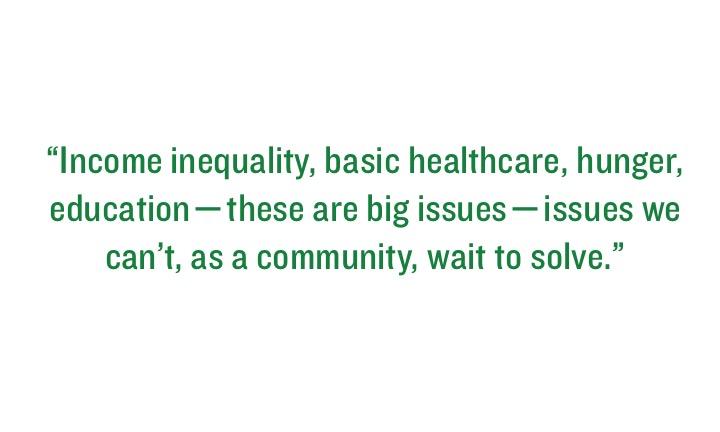
By Daniel Lurie
In a time that is dark and scary for so many, when headlines tell of terror, racial tension and gun violence, we saw a sign of hope in Priscilla Chan and Mark Zuckerberg’s promise to contribute 99 percent of their Facebook shares to better our community and our world.
The backlash against the announcement has been interesting to watch. Maybe people feel compelled to pick this apart because it’s somewhat concrete when little else around us feels within our control.
Regardless of one’s feelings about how the announcement was made and what it consists of, we would do well to remember that this is an announcement, not a comprehensive strategy. And, there are a few elements that show Chan and Zuckerberg are headed in the right direction:
1. The announcement addresses the urgency of the issues we face
Income inequality, basic healthcare, hunger, education – these are big issues – issues we can’t, as a community, wait to solve.
What should be universally applauded is this couple’s willingness to give so significantly at such a young age, not waiting until retirement or beyond. This is the type of leadership our community needs to change the odds for people living in poverty. Their generosity makes a clear statement that we have to invest boldly today if we want to see real change for the future.
2. It takes a patient approach
Thanks in large part to innovation in the tech sector, we live in a world where we can get nearly everything we want right now. Our daily interactions occur at lightning speed. From Uber to Instacart, today’s expectation is instantaneous results.
The world of philanthropy is no different. Donors expect results, and many aren’t willing to invest without a very clear and often short timeline for success. It’s refreshing to see Chan and Zuckerberg take a different approach – making a long-term investment, the outcomes of which may not be seen in months, years or even their lifetimes. Big change takes time.
3. It leaves room for policy
Perhaps the most debated piece of their announcement was the strategic move to establish a limited liability company (LLC). Many have questioned their intentions, but an LLC has power that a traditional 501(c)(3) nonprofit does not. It leaves room to invest in policy, one of the strongest ways to affect problems of this scale. We can’t solve massive structural issues with private dollars alone – we have to work alongside the government.
4. It builds on existing expertise
Chan and Zuckerberg seem aware that they don’t have all the answers, which is why putting investments in the hands of experts can be liberating and impactful. Innovation is the birthright of every company in Silicon Valley, but nonprofits are rarely given the opportunity (or the money) to dream big, to try and fail.
At the same time, I hope Chan and Zuckerberg will invest significantly in the age-old solutions employed by so many nonprofits that provide a critical safety net for those in need.
The bottom line
When many feel hopeless and frustrated about the state of poverty in this country, I’m inspired by the enormity of this gift. I admire the promise to change the world for those who, through no fault of their own, are born into poverty and dire circumstances.
With the right strategy, I believe Zuckerberg and Chan’s commitment can help us create that change. I hope others follow suit. It’s not only an opportunity to better our community; it’s an opportunity to change the rhetoric around the tech sector and instill pride in working for the industry.
Read more in The Guardian about Priscilla and Mark’s announcement from another social sector leader, Steve Hilton, CEO and co-founder of Crowdpac and author of "More Human," to be published in the U.S. in 2016.
Image credit: Daniel Lurie
Daniel Lurie is CEO and Founder of Tipping Point Community, a non-profit working to find, fund and partner with the most promising groups in the Bay Area working to change the odds for people living in poverty.